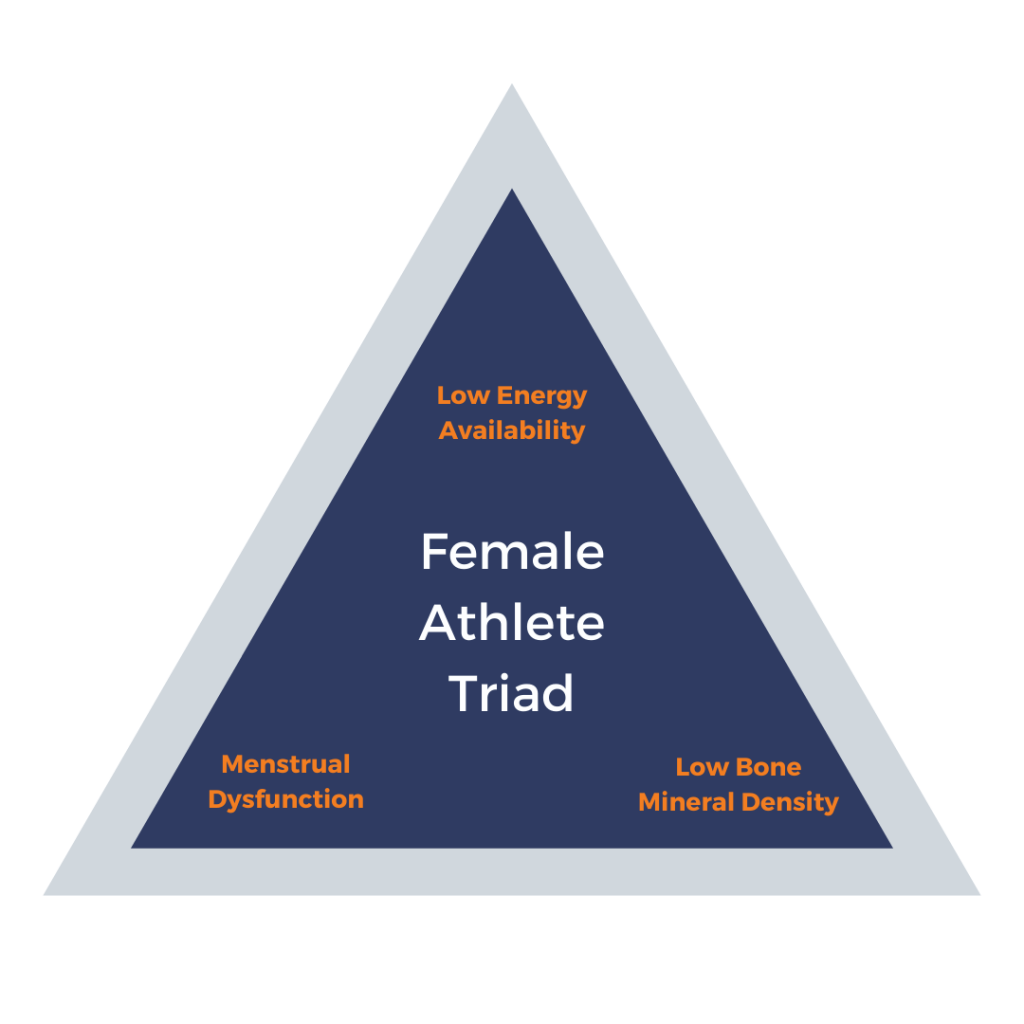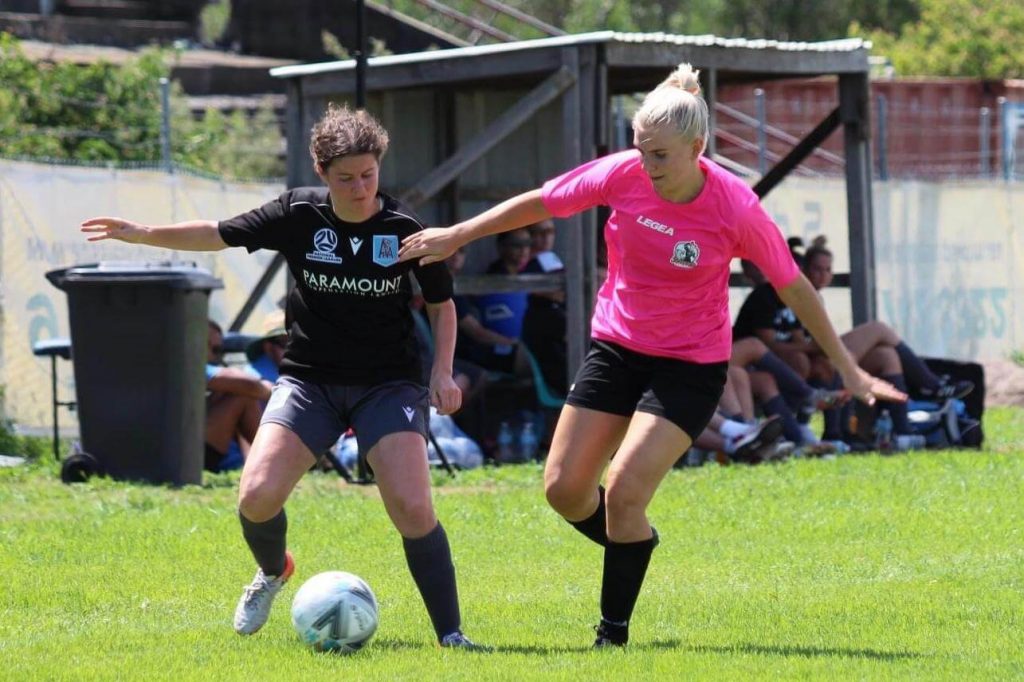What is it?
RED-S refers to impaired physiological functioning and occurs when your body does not have sufficient energy (calories/kilojoules) to maintain your essential body systems.
Previously known as the ‘Female Athlete Triad’, this model used a three-probed spectrum of conditions among female athletes.

The revision to RED-S occurred to reflect that energy deficiency can also occur in males, and impacts on more than the three originally areas describe, including:
- Immunological
- Gastro-intestinal
- Endocrine
- Cardiovascular
- Psychological
- Growth and development
- Metabolic
- Haematological
How does it occur?
Low energy availability (EA) is suspected to be the underlying cause of RED-S.
The circumstances where you can find energy mismatches occur when:
- Food intake is reduced whilst training load remains the same.
- Training load increases but food intake remains the same.
- You are intentionally restricting food intake to less than what you were having.
Why does it matter?
The food you eat each day gives you energy to fuel living and training. If you only eat enough to get you through training, there will be less energy to expend on health. From here, the body with start to shut down vital processes that assist with training, recovery, refuelling, building muscle mass, immunity, growth, mood and for females, a regular menstrual cycle.
A study done in 2018 showed athletes with low EA had a greater prevalence of decreased training response, impaired judgement, decreased coordination, decreased concentration, irritability, depression, and decreased endurance performance compared to the athletes with adequate EA.

Direct performance impact:
In a study of 211 female high school athletes, those with current or past disordered eating were found to be twice as likely to incur an injury during a sports season.
Warning signs:
These can be in the form of a variety of physical and psychological symptoms. It is worryingly easy to dismiss the initial warning signs as they are all relatively subtle.
When there is not enough energy in the body system, several symptoms can present:
- Fatigue and slow recovery post physical activity
- Digestion slows, resulting in bloating, discomfort, and IBS symptoms
- Stubborn sniffles and chronic coughs linger
- The absence of menstruation also known as hypothalamic amenorrhea
Treatment:
Every athlete with RED-S in individual and varies, and therefore treatment is individualised based on each athletes’ symptoms.
They key is to address the mismatch between energy intake and energy expenditure. This can be done in a few different ways:
- An increase in dietary intake
- A reduction in exercise
- A combination of both
Prevention:
Early detection is crucial to improve performance and prevent- long-term health consequences.
System-wide educational prevention and awareness interventions are vital for athletes and support personnel such as coaches, parents, dieticians, psychologists, and sports medicine staff.
References:
Ackerman, K., Holtzman, B., Cooper, K., Flynn, E., Bruinvels, G., Tenforde, A., Popp, K., Simpkin, A. and Parziale, A., 2018. Low energy availability surrogates correlate with health and performance consequences of Relative Energy Deficiency in Sport. British Journal of Sports Medicine, 53(10), pp.628-633.
Mountjoy, M., Sundgot-Borgen, J., Burke, L., Ackerman, K., Blauwet, C., Constantini, N., Lebrun, C., Lundy, B., Melin, A., Meyer, N., Sherman, R., Tenforde, A., Torstveit, M. and Budgett, R., 2018. International Olympic Committee (IOC) Consensus Statement on Relative Energy Deficiency in Sport (RED-S): 2018 Update. International Journal of Sport Nutrition and Exercise Metabolism, 28(4), pp.316-331.
Mountjoy, M., Sundgot-Borgen, J., Burke, L., Carter, S., Constantini, N., Lebrun, C., Meyer, N., Sherman, R., Steffen, K., Budgett, R. and Ljungqvist, A., 2014. The IOC consensus statement: beyond the Female Athlete Triad—Relative Energy Deficiency in Sport (RED-S). British Journal of Sports Medicine, 48(7), pp.491-497.
Sport, N., 2022. Explaining RED-S and its impact on athlete health & performance. [online] NSW Institute of Sport (NSWIS). Available at: <https://www.nswis.com.au/nutrition/explaining-red-s-and-its-impact-on-athlete-health-performance/> [Accessed 25 February 2022].
Thein-Nissenbaum, J., Rauh, M., Carr, K., Loud, K. and McGuine, T., 2011. Associations Between Disordered Eating, Menstrual Dysfunction, and Musculoskeletal Injury Among High School Athletes. Journal of Orthopaedic & Sports Physical Therapy, 41(2), pp.60-69.






















